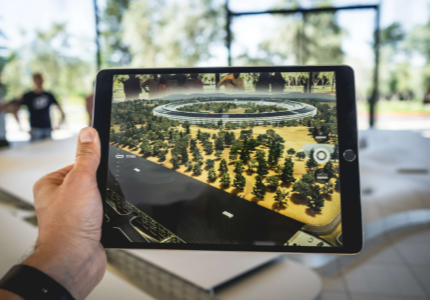How Augmented Reality Is Enhancing Education and Learning
Augmented Reality (AR) is reshaping the educational landscape by fostering immersive experiences that engage students in novel ways. This technology enhances visual learning and promotes critical thinking, making complex subjects more accessible. As AR becomes integrated into various curricula, it raises questions about its long-term impact on student outcomes. What challenges and opportunities arise from this technological shift? The exploration of these aspects reveals a compelling narrative about the future of education.
The Impact of Augmented Reality on Student Engagement
As educators increasingly explore innovative teaching methods, augmented reality (AR) emerges as a transformative tool that significantly enhances student engagement.
By creating interactive experiences within immersive environments, AR captivates learners, fostering curiosity and participation. This technology encourages exploration and collaboration, empowering students to interact with content dynamically.
Consequently, AR not only enriches educational experiences but also cultivates a passion for learning that transcends traditional classroom boundaries.
Read more: The Importance of Cybersecurity in a Digital World
Enhancing Visual Learning Through AR Applications
Augmented reality applications redefine visual learning by providing learners with interactive and immersive experiences that traditional methods cannot offer.
By utilizing interactive textbooks and immersive simulations, these technologies captivate students’ attention, fostering deeper understanding and retention of complex concepts.
This innovative approach liberates learners from conventional boundaries, allowing them to explore and engage with content in dynamic and meaningful ways, enhancing their educational journey.
AR in STEM Education: A New Frontier
How can augmented reality reshape the landscape of STEM education?
By integrating AR simulations, educators can create immersive environments where students engage in interactive experiments that transcend traditional learning.
This innovative approach fosters critical thinking and problem-solving skills, allowing learners to visualize complex concepts and collaborate in real-time.
Ultimately, AR presents a new frontier that enhances curiosity and deepens understanding within the STEM disciplines.
Accessibility and Inclusivity in Learning With Augmented Reality
While traditional educational methods often overlook the diverse needs of learners, augmented reality (AR) has the potential to create a more accessible and inclusive learning environment.
By enabling adaptive learning pathways, AR facilitates personalized experiences for students with varying abilities.
Interactive experiences foster engagement and understanding, bridging gaps that conventional approaches may leave unaddressed, ultimately empowering every learner to thrive in their educational journey.
Conclusion
In conclusion, augmented reality serves as a vibrant bridge between traditional education and the limitless possibilities of interactive learning. By captivating students’ imaginations and enhancing their understanding, AR transforms classrooms into dynamic ecosystems of knowledge. As this technology continues to evolve, it not only fosters collaboration and critical thinking but also ensures that learning is an inclusive journey for all. Ultimately, augmented reality is not just a tool; it is the key unlocking a brighter future for education.




